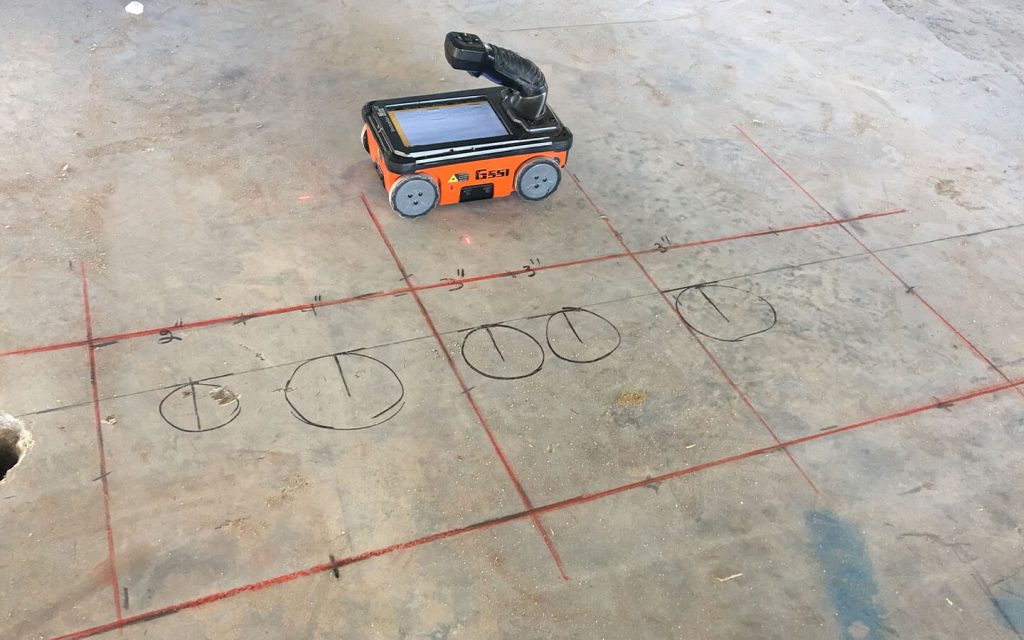RainierGPR Service Areas: Professional Concrete Scanning in Your Region
RainierGPR Service Areas: Professional Concrete Scanning in Your Region
Blog Article
Enhancing Project Preparation and Execution With Advanced Concrete Scanning Techniques
In the realm of job preparation and insight, accuracy and implementation are essential elements that can make the difference between success and troubles. Advanced concrete scanning techniques have emerged as a sophisticated tool established to elevate the requirements of task administration within the construction sector.
Advantages of Advanced Concrete Scanning Strategies

Improved Accuracy in Task Analyses
Enhancing job analyses through sophisticated concrete scanning methods significantly improves the precision and reliability of building assessments. By utilizing advanced scanning modern technologies such as ground-penetrating radar (GPR) and 3D imaging, project groups can now get in-depth insights right into the condition of concrete frameworks, determining potential imperfections or weak points that may not be visible to the nude eye. This boosted degree of precision in job analyses enables construction experts to make even more enlightened decisions relating to repair service and maintenance strategies, bring about enhanced general project end results.
Moreover, the raised precision in job analyses attained via innovative concrete scanning strategies helps in lessening the risk of unpredicted issues throughout the building stage. By proactively finding concealed abnormalities within concrete frameworks, such as rebar corrosion or voids, job groups can resolve these issues early, staying clear of pricey hold-ups and rework later in the job lifecycle. Eventually, the boosted precision in project evaluations assisted in by innovative concrete scanning techniques contributes to higher performance, cost-effectiveness, and top quality in construction jobs.
Very Early Identification of Structural Difficulties
Very early discovery of structural challenges plays an essential function in making certain the honesty and safety of concrete structures throughout the construction process. Determining possible problems at a beginning allows for timely treatment, protecting against pricey rework, timetable delays, and safety and security hazards. Advanced concrete scanning techniques, such as ground-penetrating radar (GPR) and 3D imaging, enable project teams to uncover surprise defects, voids, support format disparities, and various other abnormalities that could compromise the structure's stability.
By applying these strategies during the preparation and execution stages, construction professionals can proactively deal with architectural obstacles before they intensify into major problems. As an example, detecting poor concrete cover over reinforcement bars at an early stage can stop corrosion and architectural weakening in the long run - RainierGPR Service Areas. Additionally, identifying variants in concrete density or density can help enhance product usage and make certain uniform toughness properties across the framework
Eventually, very early identification of architectural obstacles with advanced concrete scanning not just boosts the general high quality and toughness of view it the building and construction however likewise adds to a much safer built setting for customers and residents.
Enhanced Safety And Security Procedures in Building And Construction
The implementation of durable security procedures is imperative in the construction market to alleviate threats and guard the well-being of employees and stakeholders. Construction sites are inherently harmful atmospheres, with prospective risks ranging from falls and devices malfunctions to structural failures. To improve precaution, building firms are progressively taking on technological improvements such as wearable devices that check employees' vital indicators and detect prospective health concerns in real-time. In addition, the use of drones for site surveillance permits normal safety inspections without putting workers in damage's way. Safety and security training programs have actually also evolved to consist of online fact simulations that supply hands-on experience in managing emergency situation circumstances. Additionally, the assimilation of expert system in security monitoring systems makes it possible for positive identification of possible dangers, permitting prompt interventions. By focusing on security through the unification of sophisticated technologies and thorough training programs, building tasks can dramatically lower crashes and produce a secure workplace for all involved - RainierGPR Service Areas.
Streamlining Project Management Processes
To maximize operational efficiency and make sure job success in the construction industry, a focus on streamlining task administration processes is crucial. By applying reliable project monitoring procedures, construction jobs can reduce delays, lower expenses, and enhance total efficiency.

Final Thought
Finally, the use of innovative concrete scanning strategies uses numerous advantages for task planning and execution. These methods provide improved accuracy in task analyses, very early recognition of structural obstacles, improved precaution in building, and streamlined job monitoring processes. Including these approaches right into project workflows can ultimately bring about extra efficient and successful end results in building and construction projects.
Ultimately, the improved accuracy in job analyses promoted by advanced concrete scanning methods contributes to greater effectiveness, cost-effectiveness, and high quality in construction jobs. RainierGPR Service Areas.
To enhance functional performance and make certain task success in the construction sector, an emphasis on improving task management procedures is vital. By carrying out reliable project administration procedures, building and construction tasks can minimize delays, lower prices, and boost total productivity. By enhancing task monitoring processes with technology combination, clear interaction, and data-driven techniques, building tasks can accomplish greater performance, cost-effectiveness, and successful results.
These techniques offer better precision in task evaluations, early recognition of structural difficulties, boosted safety and security procedures in building, and structured job monitoring processes.
Report this page